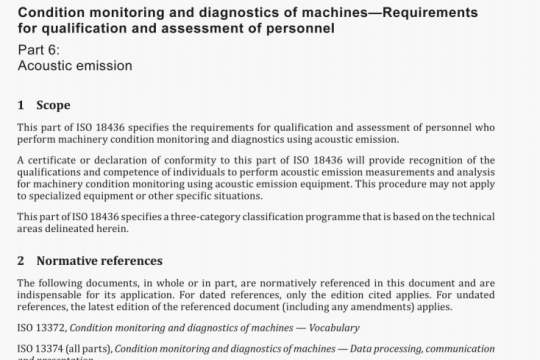ISO 22197-4:2013 pdf free
ISO 22197-4:2013 pdf free.Fine ceramics – Test method for air-purification performance of semiconducting photocatalytic materials
This part of ISO 22197 concerns the development, comparison, quality assurance, characterization,reliability, and design data generation of photocatalytic materials. The method described is intended to obtain the air-purification performance of photocatalytic materials by exposing a test piece to model polluted air under irradiation by ultraviolet (UV-A) light. Formaldehyde (HCHO) is chosen because it is a typical indoor air pollutant that causes the so-called sick-building syndrome. The test piece, placed in a flow-type photoreactor, is activated by UV irradiation, and adsorbs and oxidizes gas-phase formaldehyde to form carbon dioxide (CO2) and other oxidation products. The air purification performance is determined from the net amount of formaldehyde removed by the test piece (umol).The simple adsorption of HCHO by the test piece (not due to photocatalysis) is evaluated by tests in the dark. However, some test pieces absorb formaldehyde very strongly, and a stable concentration of formaldehyde may not be attained in the designated time of test. The photocatalytic activity may depend on physical and chemical properties of pollutants mainly due to the adsorption process involved. For a better evaluation of air purification performance of photocatalytic materials, it is recommended to combine one or more suitable test methods as provided in other parts of ISO 22197.
The test equipment enables a photocatalytic material to be examined for its pollutant-removal capability by supplying the the test gas continuously, while providing photoirradiation to activate the photocatalyst. It is the same as that used in the test method for the removal of nitric oxide (ISO 22197-1) and consists of a test gas supply, a photoreactor, a light source, and pollutant-measurement equipment.Since low concentrations of pollutants are to be tested, the system shall be constructed with materials of low absorption and resistant to ultraviolet (UV) radiation, for example, acrylic resin, stainless steel,glass and fluorocarbon polymers. An example of a test system is shown in Figure 1.ISO 22197-4 pdf download.




